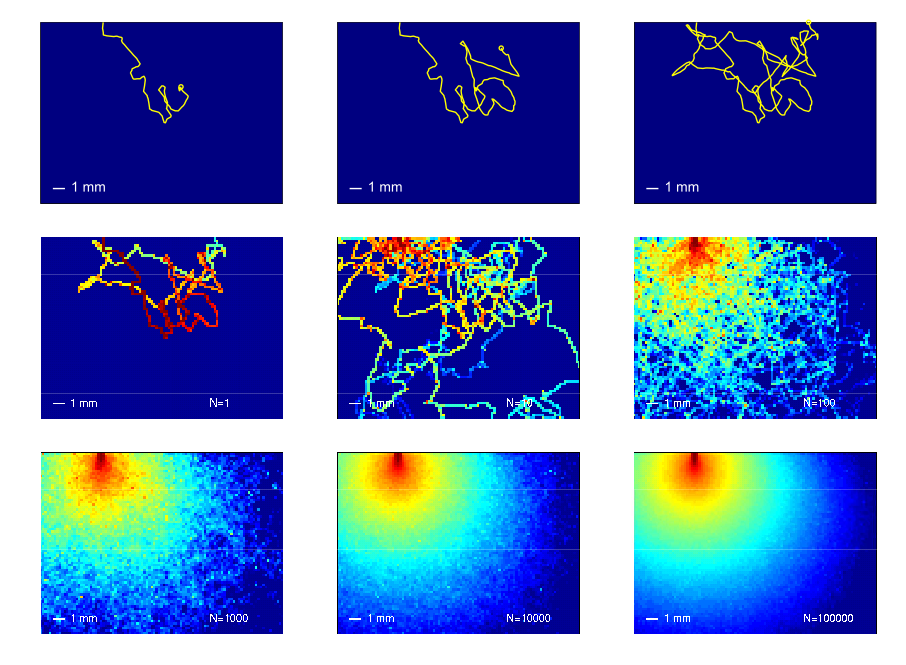-
Notifications
You must be signed in to change notification settings - Fork 0
Home

The Monte Carlo Command Line (MCCL) application provides a command-line environment that gives users access to a large variety of sources, tissues and detectors that they can specify within a input infile. The source specifications include point, surface or volume sources placed outside or within the tissue volume. The tissue itself can be homogeneous, multi-layered or have an objects in the shape of ellipsoids or cylinders. Detectors available include surface reflectance/transmittance detectors, internal radiance or fluence detectors and can be defined in terms of cylindrical or Cartesian coordinate systems as a function of space, time, angle, spatial-frequency, temporal-frequency and their combinations. After running the Monte Carlo simulation, MATLAB or GNU Octave scripts are available to visualize the results.
In addition, post-processing capabilities are part of the MCCL download. The Monte Carlo Post-Processor (MCPP) allows a user to run a simulation and save pertinent information to database files. The post-processor can then be launched to read the database and generate detector results. This database file can be reread any number of times and will produce results much more quickly than running an independent MCCL simulation. Perturbation Monte Carlo (pMC) and differential Monte Carlo (dMC) can also be specified in the MCCL infile and will determine detector results for tissues with slightly different optical properties than those specified for the original database. This enables the user to run inverse solutions using pMC and dMC.
Virtual Photonics Technology Initiative
Project Site | Discussion | Education
- Getting Started
- Editing infiles
- Examples
- Capabilities & Implementation
- Source, Tissue, Detector Options
- Post Processor
- Inverse Solutions
- Parallel Processing
- Validation & Comparison with MCML
- References
- FAQ
- Downloads & Latest Release